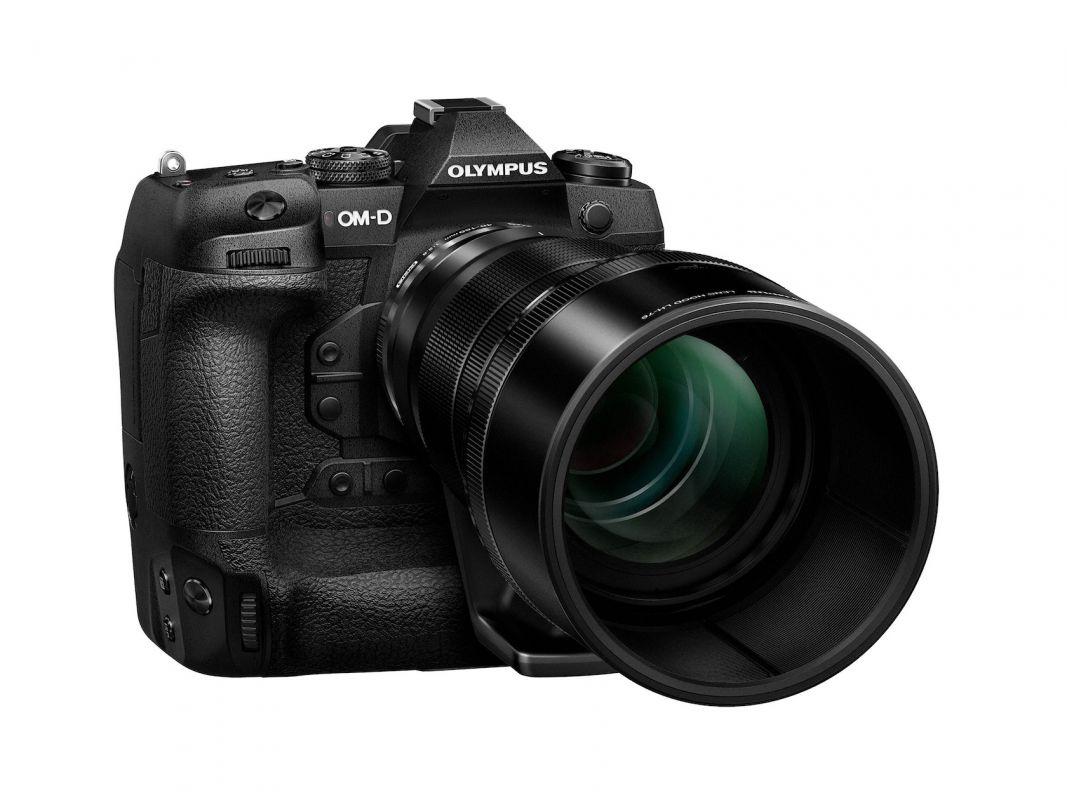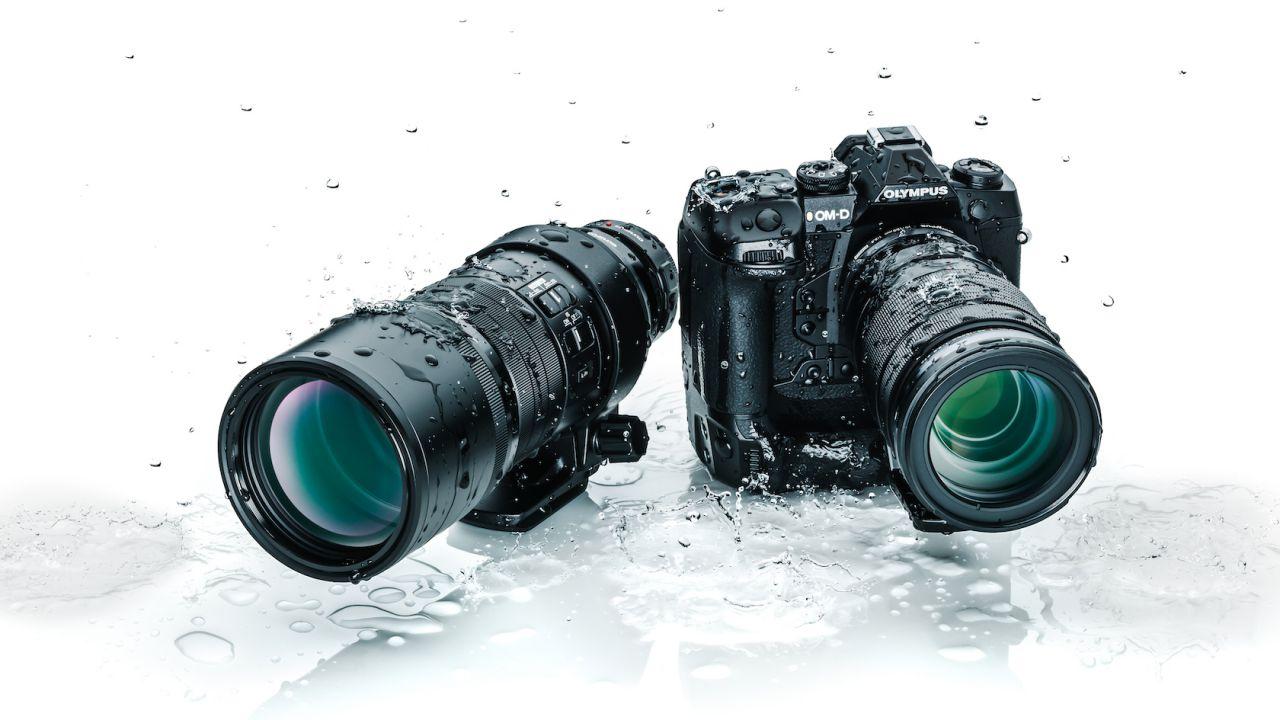OLYMPUS
:no_upscale()/cdn.vox-cdn.com/uploads/chorus_asset/file/13711110/em1x.png) A closer look at the amazing tech underlying
A closer look at the amazing tech underlying
We have described elsewhere, Olympus held a limited press-only briefing and shooting experience with its flagship Olympus E-M1X back in early December, subject to a non-disclosure agreement. During that time, we were able to ask questions of senior technical staff, who attended from Olympus' Hachioji R & D headquarters, just outside Tokyo.
The discussion was fairly informal and unstructured, rather than trying to wrestle it into an intelligible transcript, I have chosen to package it in summary form, with digests of our questions and Olympus' answers. (The first question is from a separate executive briefing, but I included it here because I felt it was an important question that many users will be asking.)
Olympus's answer to this was that they wanted to fully flesh-out their E-M product series with a fully professional model, before they returned to updating the E-M5 model line. The E-M1 Mark II came close to that point, but they wanted to deliver the performance and ruggedness they knew they could with the E-M1X, to round out the top end of their line. Now that's done, the E-M5 III will presumably be coming to some point, but they did not reveal any specifics on its timing.
:no_upscale()/cdn.vox-cdn.com/uploads/chorus_asset/file/13711115/OM_D_E_M1X_Top1_113.jpg) Lots more processor power (!) What do they use it for?
Lots more processor power (!) What do they use it for?The E-M1X has twice the CPU power of the E-M1 Mark II; a total of eight CPU cores. We asked Olympus what the added processing power does, and whether there was also a similar increase in the LSI front-end that handles the lowest-level processing.
The eight CPU cores are general-purpose processors, twice as many as the E-M1 Mark II has, but the front-end LSI is the same. The increased processing power enables the handheld High-Res and Live ND modes, as well as the AI-based autofocus algorithms. (See below for further discussion, the engineers referred to this as "intelligent subject detection.") The processor chips are designed to perform standard image processing functions as found in other cameras, but they can also be used for executing deep learning algorithms.
 I found it very interesting that the E-M1X does not have dedicated hardware for doing its AI-based subject recognition. Apparently, having eight powerful image-processing colors gives them enough horsepower to run deep learning processing at high enough frame rates to deliver real-time subject recognition.
I found it very interesting that the E-M1X does not have dedicated hardware for doing its AI-based subject recognition. Apparently, having eight powerful image-processing colors gives them enough horsepower to run deep learning processing at high enough frame rates to deliver real-time subject recognition.
 As to the front-end LSI circuitry, that's integrated into the basic processor chip. (There are two chips, and each has four colors on it). It sounded, though, like the raw image data comes through the front-end circuitry of just one of the processor chips, with the other chip just providing the additional CPU power. It is likely that there would be no advantage in splitting the front-end processing between two chips, because at that low level, the overall throughput is limited by the readout speed sensor.
As to the front-end LSI circuitry, that's integrated into the basic processor chip. (There are two chips, and each has four colors on it). It sounded, though, like the raw image data comes through the front-end circuitry of just one of the processor chips, with the other chip just providing the additional CPU power. It is likely that there would be no advantage in splitting the front-end processing between two chips, because at that low level, the overall throughput is limited by the readout speed sensor.
 Two chips means two UHS-II memory channels
Two chips means two UHS-II memory channelsEach processor chip has circuitry on it to support a single UHS-II data stream, which is why only one of the two SD card slots on the E-M1 II was UHS-II capable. With two chips, though, the E-M1X can support two UHS-II cards. This will mean faster buffer clearing, although I am writing this, we are waiting to see final firmware before we officially test the E-M1X's performance.
Same sensor, but better image processing
The E-M1X uses the same sensor as the E-M1 Mark II, but the E-M1X has better image processing, so high-ISO noise will be lower in JPEGs. (Raw files should look the same, though.) The improved processing apparently does not mean lower noise levels, but also smoother gradations in skin tones, and improved cAI-based autofocus ?!

As you'll read in our overview of the camera, the E-M1X can intelligently recognize three different types of subjects anywhere in the frame and then put the autofocus point directly over the critical area. The three subject types are motorsports (including both cars and motorcycles) plus trains and airplanes.
 This is an absolutely remarkable, unprecedented capability. Eye-detect autofocus is a simplistic version of this kind of subject recognition, but the tech that Olympus has deployed in the E-M1X goes way, way beyond that.
This is an absolutely remarkable, unprecedented capability. Eye-detect autofocus is a simplistic version of this kind of subject recognition, but the tech that Olympus has deployed in the E-M1X goes way, way beyond that.It then closely examines all 16 images, and mathematically shifts each of them as needed to render all 16 in perfect alignment. That is, shifted so that the R, G, and B sub-pixels align with each other as needed to create a 50-megapixel final super-resolution image. [And yes, Ricoh does something similar with its similar Handheld Pixel Shift Resolution function in the Pentax K-1 II DSLR, but that uses only four separate exposures to create each image, rather than 16 of them in the E-M1X.] What is most amazing about this is that it actually seems to work! : -0 Samples we shot in this mode are quite surprisingly sharp and crisp, to a degree we would never have imagined it possible.
 (Oh, and note that there's still a tripod-based high-resolution mode that produces 80-megapixel final images, but only with the camera locked down solidly on a tripod.)
(Oh, and note that there's still a tripod-based high-resolution mode that produces 80-megapixel final images, but only with the camera locked down solidly on a tripod.)

It turns out that the camera can operate indefinitely from a USB-C power source, and can also charge its batteries from one, just not at the same time. If the camera is operating from USB-C power, it will do so for as long as the power supply can provide juice, without discharging its internal batteries at all. (But it does seem to need at least one internal battery with at least a tiny amount of charge left, in order to turn on and recognize the USB-C power source. Dave Etchells

No comments:
Post a Comment